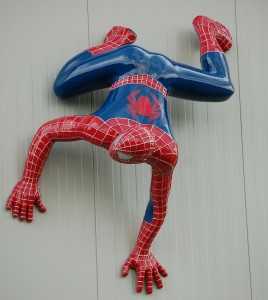WEDNESDAY, 29 AUGUST 2012
Koudy Williams, a professor at Wake Forest Baptist Medical Center's Institute for Regenerative Medicine and a self-confessed ‘Spider-Man geek’ explains how scientists in his laboratory are attempting to ‘harness the body's innate ability to regenerate itself’ by studying the abilities of salamanders and other animals to do the very same thing. Whilst in the Spiderman film bioengineering nearly ends in disaster with mutant human-lizards set to take over the world, Williams is keen to point out they have ‘much safer methods’ and would never compromise ethical issues by combining human and animal genes.Back in the real world there are three main ways in which regenerative medicine can be used to repair and replace organs. Firstly, a replacement organ may be engineered in a laboratory using the patient’s own cells and a scaffold; a particularly effective method for bladders and windpipes. Alternatively healing cells may be injected directly into a diseased organ. Finally, the approach most similar to that used in Spider-man involves using drug-like molecules to encourage regeneration from within. These aid the body’s natural repair mechanisms involving chemokine proteins which are released by injured cells and promote healing.
Whilst regenerating a whole arm (as occurs in the film) is still a long way off, researchers are developing methods to build the component parts, including muscle, bone and tendons with the hope to re-grow whole limbs or organs in the future. These approaches have the potential to aid the recovery of numerous people- from wounded soldiers to type one diabetics or those with damaged brain tissue.
Written by Milly Stevens

